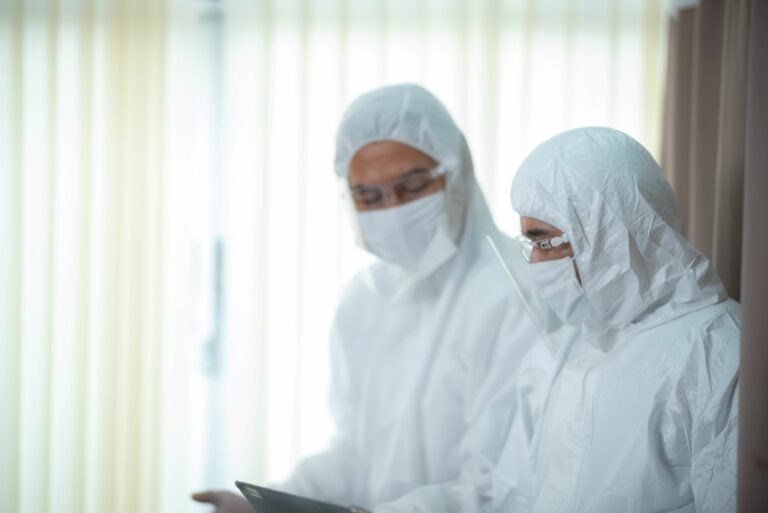A condition that affects the blood vessels in the lungs and the right side of the heart causing high blood pressure in the pulmonary arteries is called Pulmonary hypertension (PH). PH can be difficult to diagnose and manage, and end-stage PH can significantly impact a patient’s quality of life. Therefore, understanding the symptoms of end-stage PH is crucial in providing appropriate medical care and support to people with pulmonary hypertension. This article will give an overview of the symptoms of end-stage PH, its causes and treatment options, and the importance of early diagnosis and treatment.
Overview of End-Stage Pulmonary Hypertension
End-stage pulmonary hypertension is a severe and life-threatening condition that occurs when the pulmonary arteries become severely narrowed or blocked, leading to increased pulmonary vascular resistance and right ventricular failure. At this stage, patients diagnosed with pulmonary hypertension may experience a significant decline in their quality of life, and treatment options may be limited.
Patients with end-stage pulmonary arterial hypertension may experience severe shortness of breath, chest pain, and heart failure. They may require supplemental oxygen to breathe and may experience frequent hospitalizations. End-stage pulmonary hypertension may also lead to other complications, such as blood clots, arrhythmias, and lung infections.
Despite the significant impact on a patient’s quality of life, end-stage pulmonary hypertension can be challenging to manage, and treatment options may be limited. A lung transplant may be an option for some patients, but it is not suitable for everyone. In some cases, treatment may focus on controlling symptoms and improving the patient’s comfort, as end-of-life care may be necessary.
Patients with pulmonary hypertension need to seek early diagnosis and treatment to help prevent the progression of the disease to the end stage. Furthermore, ongoing monitoring and management of symptoms are crucial in improving the patient’s quality of life and overall health outcomes.
What are the Symptoms of End Stage Pulmonary Hypertension?
Patients with pulmonary hypertension may not experience symptoms in the early stages of the disease, making it difficult to diagnose. However, as the disease progresses, patients may experience a range of signs and symptoms. Some of the common symptoms of end-stage pulmonary hypertension include:
- Shortness of Breath: One of the hallmark symptoms of pulmonary hypertension is shortness of breath, which can become more pronounced as the disease progresses. Patients may have difficulty breathing, even at rest, and need supplemental oxygen to help them breathe more comfortably.
- Fatigue: Patients with end-stage pulmonary hypertension may experience extreme fatigue and weakness, making it challenging to perform everyday tasks or engage in physical activities.
- Chest Pain: Some patients may experience chest pain or discomfort due to increased pressure in the pulmonary arteries.
- Swelling: Patients with end-stage pulmonary hypertension may develop swelling in the feet, ankles, or legs as a result of fluid buildup in the body.
- Cough: Patients with pulmonary hypertension may develop a persistent cough, which can be exacerbated by shortness of breath.
- Dizziness or Fainting: In severe cases, patients may experience dizziness or fainting, which can signify low blood pressure or decreased blood flow to the brain.
Diagnosis of End-Stage Pulmonary Hypertension
End-stage pulmonary arterial hypertension diagnosis is crucial for appropriately managing the disease. Diagnosing end-stage PAH can be challenging, and it often requires a team of medical professionals, including a pulmonologist, cardiologist, and PH specialist.
A thorough physical exam is often the first step in diagnosing end-stage PAH. The medical professional may listen to the heart and lungs, check for swelling in the legs and ankles, and review the patient’s medical history. Patients with PAH may present symptoms like shortness of breath, fatigue, chest pain, cough, and swelling in the legs and ankles.
To confirm the diagnosis of end-stage PAH, the medical professional may perform various tests to assess lung function, blood flow, and heart function. A pulmonary function test can help to determine how well the lungs are functioning, and an echocardiogram can assess heart function and blood flow through the heart or lungs. A chest x-ray or CT scan may be done to identify lung disease or other conditions that could cause PAH.
A definitive diagnosis of end-stage PAH requires a right heart catheterization, a procedure to measure the pressure in the pulmonary arteries. The professional medical inserts a thin tube called a catheter into a blood vessel in the groin or neck and threaded it into the pulmonary artery. The catheter is used to measure the blood pressure in the pulmonary artery, and a high-pressure reading can confirm the diagnosis of PAH.
Once a patient is diagnosed with end-stage PAH, further testing may be done to determine the underlying cause of the disease. The medical professional may test for connective tissue diseases, congenital heart disease, or exposure to certain drugs or toxins.
An early diagnosis and treatment of end-stage PAH are crucial to improving symptoms and quality of life. The medical professional will work with the patient to develop a treatment plan that includes medications, lifestyle changes, and sometimes surgery, such as a lung transplant. Close monitoring is required to assess treatment effectiveness and adjust the treatment plan as needed.
Causes and Prevention of Pulmonary Hypertension
Pulmonary hypertension is a complex condition that can have many different underlying causes. According to World Health Organization, existing chronic lung diseases frequently cause pulmonary hypertension. In rare cases, pulmonary hypertension is caused by schistosomiasis, a worm illness common in Africa and Latin America, and sickle cell disease, a genetic blood disorder common in Africans. Some of the common causes of pulmonary hypertension include:
- Heart and Lung Diseases: Pulmonary hypertension can be a complication of heart and lung diseases, such as chronic obstructive pulmonary disease (COPD), interstitial lung disease, and pulmonary embolism.
- Genetics: Some people may be genetically predisposed to developing pulmonary hypertension, particularly idiopathic pulmonary arterial hypertension (IPAH).
- Blood Vessel Disorders: Pulmonary hypertension can be caused by disorders that affect the blood vessels, such as scleroderma and lupus.
- Other Medical Conditions: Pulmonary hypertension can complicate other medical conditions, such as sleep apnea, liver disease, and HIV/AIDS.
Prevention of pulmonary hypertension depends on the underlying cause. In some cases, treatment of pulmonary hypertension can prevent or slow the progression of pulmonary hypertension. For example, quitting smoking can reduce the risk of developing pulmonary hypertension due to COPD. In cases where pulmonary hypertension is caused by genetics, there may be no way to prevent the development of pulmonary hypertension. However, early diagnosis and treatment of pulmonary arterial hypertension can help to manage symptoms and improve quality of life.
Treatment Options for End-Stage Pulmonary Hypertension
Treatment options for end-stage pulmonary hypertension are limited, and the main goal is to manage symptoms and improve the patient’s comfort. The following are some of the treatment options that may be considered:
- Oxygen Therapy: Patients with end-stage pulmonary hypertension may require supplemental oxygen to help them breathe more comfortably. Oxygen therapy may be given through a nasal cannula or a mask.
- Medications: Certain medications may help manage symptoms and improve the patient’s quality of life. For example, diuretics treatment can help to reduce fluid buildup, and pain medications may be given to manage discomfort.
- Lung Transplant: In some cases, a lung transplant may be an option for patients with end-stage pulmonary hypertension. This procedure involves removing the patient’s diseased lungs and replacing them with healthy lungs from a donor.
- End-of-Life Care: End-stage pulmonary hypertension can be a life-limiting condition, and in some cases, treatment may focus on providing comfort and improving the patient’s quality of life. This may include palliative care, hospice care, and other supportive services.
- Clinical Trials: Patients with end-stage pulmonary hypertension may be eligible to participate in clinical trials to test new treatments and therapies.
It is essential to work closely with a healthcare team to develop a treatment plan that is tailored to the patient’s specific needs and goals. While end-stage pulmonary hypertension symptoms and causes may be challenging to manage, there are still treatment options available to help improve the patient’s quality of life and overall well-being.
DrKumo Real-Time RPM Solutions to Monitor Patients Diagnosed with Pulmonary Arterial Hypertension
Remote patient monitoring (RPM) can be essential in managing pulmonary hypertension, particularly in the end-stage of the disease. By utilizing remote patient monitoring technology, healthcare providers can ensure that patients with pulmonary hypertension receive appropriate care and support to manage their symptoms and improve their quality of life. RPM can also help patients feel more connected and supported throughout their treatment, which can be particularly important for those managing a chronic condition such as pulmonary hypertension.
DrKumo is a technology leader in highly scalable, continuous, real-time remote patient monitoring solutions that allows healthcare providers to monitor patients’ symptoms and vital signs remotely, providing early detection of potential complications and enabling prompt intervention. This can be particularly important for patients with pulmonary hypertension, who may be at risk for sudden and severe worsening of their symptoms. It can improve outcomes for patients with pulmonary arterial hypertension, particularly those in the end-stage of the disease.
Takeaway
End-stage pulmonary hypertension is a severe condition that can significantly impact a patient’s quality of life. It is essential to recognize the symptoms of pulmonary hypertension and seek medical attention if you experience any of them. With early diagnosis and appropriate treatment, it is possible to manage the symptoms of pulmonary hypertension and improve quality of life. While there is no cure for pulmonary hypertension, there are treatment options available that can help slow the disease’s progression and improve symptoms. Additionally, understanding the underlying causes of pulmonary hypertension can help to identify ways to prevent the condition from developing or progressing. By utilizing remote patient monitoring technology and working closely with your healthcare provider, you can actively manage your pulmonary hypertension and improve your overall health and well-being.
Ask your healthcare provider about remote patient monitoring and other tools and resources to help you manage your condition and achieve your health goals. Contact us now!








